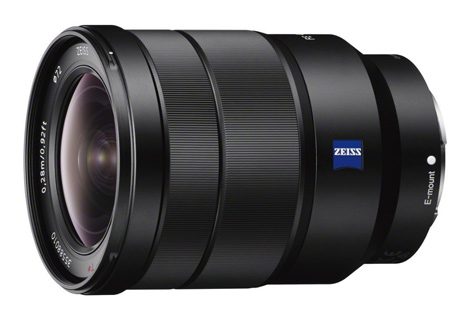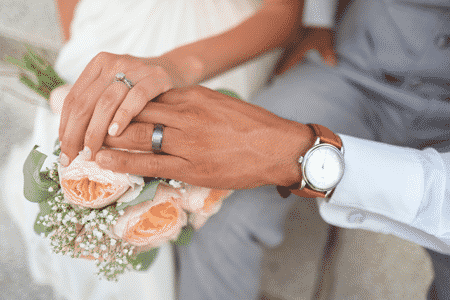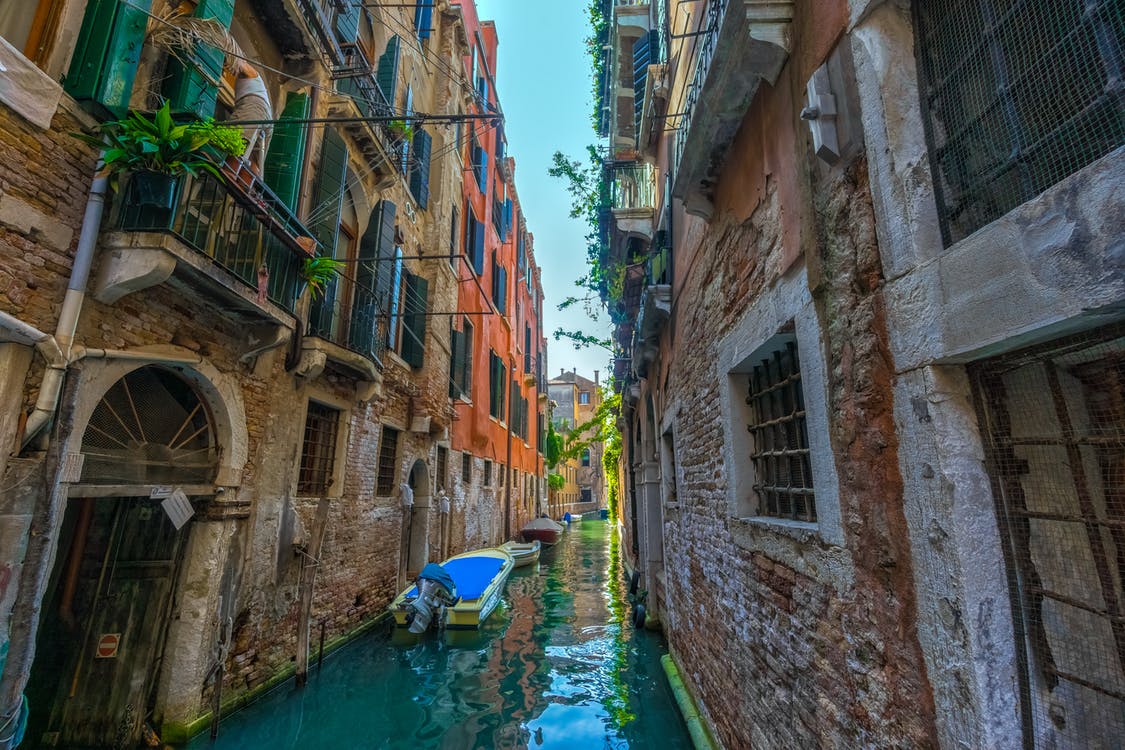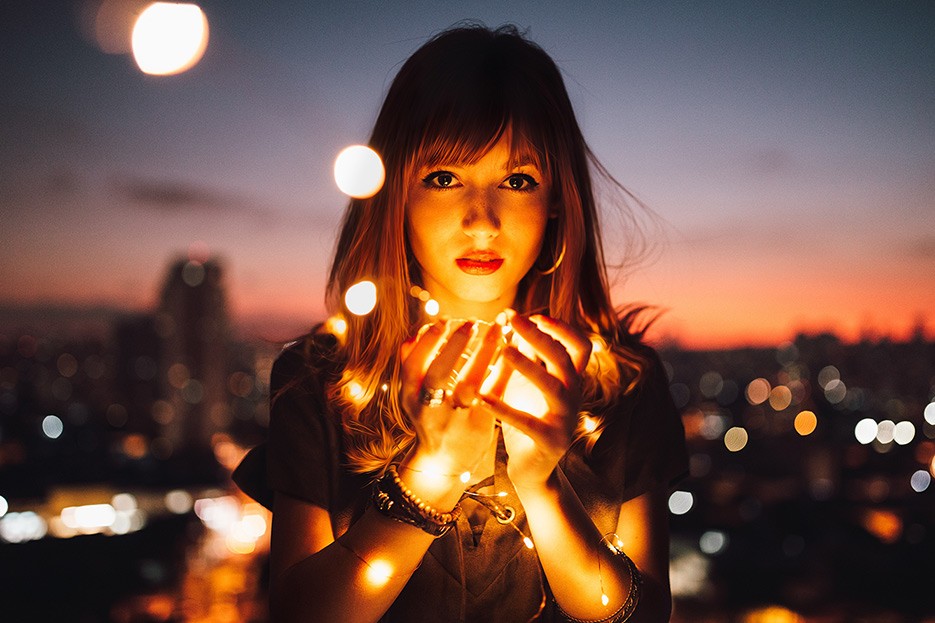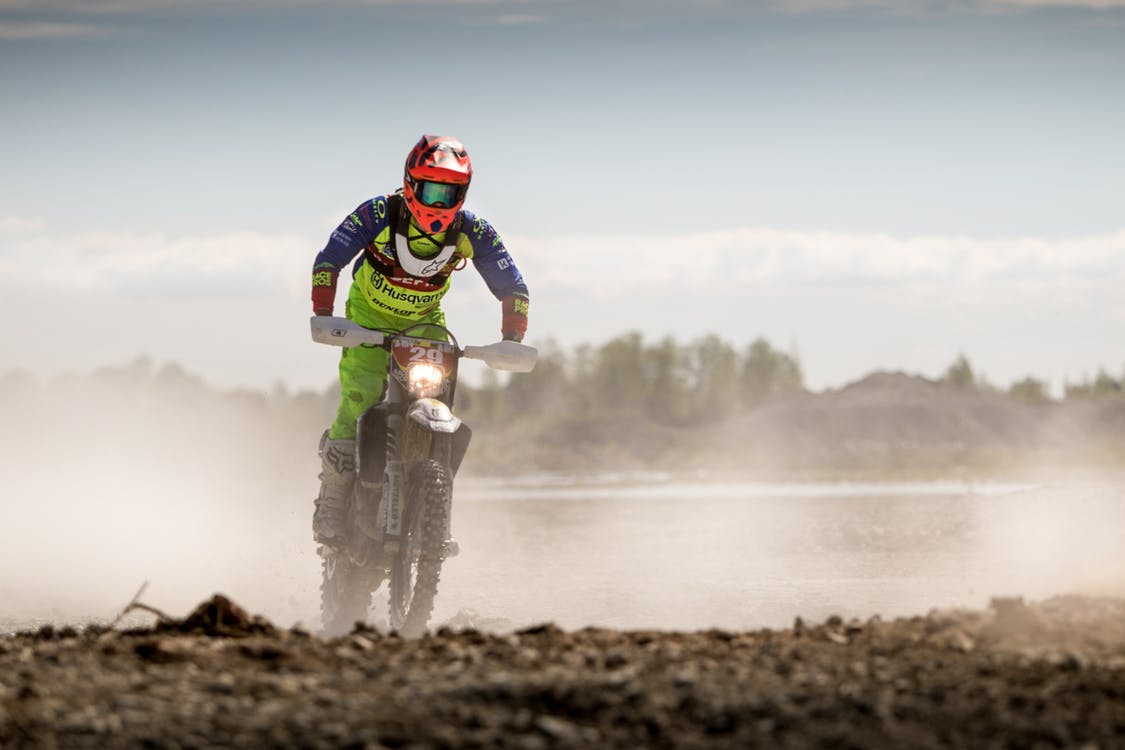Landscape photography is one of the most popular types among both amateur and professional photographers. We’ve researched the best Sony lenses for landscape photography to help save you time and make it easy to select the best lens for your Sony.
Table of Contents
ToggleSelecting the best Sony Lenses for Landscape Photography
Traveling, exploring, waiting for the beautiful light and simply enjoying the time in nature can be amazing.
While your camera is an important tool in capturing landscape shots, the lenses you use play a far bigger role. The most important factor is the focal length you choose, and while you could technically speaking photograph with just about any lens, going with an extremely wide angle will allow you to capture so much more and show your viewers more of the situation.
Landscape shooters usually own a full frame camera (such as Sony A7 or A9) because there is no crop factor, but there are plenty of excellent options for those of you who own a Sony with an APS-C sensor.
This guide is for E-mount cameras; A6, A7 and A9 series.
Finding lenses for landscape photography can be tricky since there are a ton of lenses available. Based on quality we checked the best landscape lenses from Sony and Zeiss, and created this list of our very best picks.
Best Sony Landscape Lenses for Zoom:
Sony 10-18mm f/4 G OSS
Sony 16-35mm f/4 ZA OSS
Sony 18-105mm f/4 G OSS
Sony 24-70mm f/4 OSS
Sony 70-200mm f/4 G OSS
Best Sony Landscape Prime Lenses:
Zeiss Batis 18mm f/2.8
Sigma 19mm f/2.8 DN
Sony 24mm f/1.8 Zeiss
Sony 35mm f/2.8 ZA
Best Sony Landscape Zoom Lenses 2022
If you decide to buy anything after clicking on our Amazon links, you automatically support us. It’s what allows us to write guides such as this one.
1. Sony 10-18mm f/4 G OSS (APS-C)
The Sony 10-18mm f/4 G OSS is the widest zoom lens available for APS-C Sony cameras.
Aperture stays fixed at f/4 regardless of your length, which seems to be a standard for almost all Sony’s zooms and it’s something we like. While f/4 is not the best aperture for low light, it’s still better than f/5.6 or f/6.3, something that’s common when zooms under $1000.
If you like photographing landscape, cities, architecture and wide places when traveling, you’ll love the field of view. Auto focus is also quick and usable for shots on the go even though this isn’t aimed at sports shooters.
Distortion is very well controlled for a lens this wide, but vignetting at f/4 and 10mm will have to be corrected either in the camera or in post process, as you’ll most likely find it too strong.
The lens is also really light, yet feels solid and is mostly made of metal. It’s far from heavy at 0.50 lb (225g). The minimum focus distance is 0.82 ft (0.25m) and it takes 62mm filters.
It’s a perfect lens for landscape, streets, buildings, nature and even for traveling. It’ll be fine indoors too, but you will probably have to raise the ISO when in dim light.
A really useful feature is the OSS (stabilization) so if your camera doesn’t have it built-in, you can rely on getting around 4 stops of extra stabilization if you’re not stable enough.
You can buy it at Amazon or see more reviews here.
2. Sony 16-35mm f/4 ZA OSS
The Sony 16-35mm f/4 ZA OSS is a versatile, sharp lens for all sorts of landscape and wide angle situations and it’s designed for full frame Sony cameras.
If you prefer wide zooms over primes, there’s no better lens, especially at this price. The colors, contrast and sharpness are all great. While it’s usable at f/4, the corners might be a little too soft for some, at least when above 28mm.
Specification wise, the 16-35mm f/4 features AA (advanced apsherical) and 3 ED elements that help control the chromatic aberration and show less distortion. There’s also T* coating to reduce the flare and ghosting. It displays normal signs of vignetting and distortion for when under 20mm, but both can be corrected if needed.
It weighs 18.3 oz (518g) and it balances nicely on all A7 bodies. Its minimum focus distance is 0.92 ft (0.28m) but it’s nothing to use as a lens for close up shots with 0.19x magnification. The lens is aimed at indoor, street, landscape and group shots scenarios and it excels at that.
Aperture stays fixed at f/4 at all lengths which seems to be a standard with the majority of Sony’s lenses. If most of your work is done outdoors then there’s no point in buying the bigger, heavier and more expensive f/2.8 version.
You can buy it at Amazon or see more reviews here.
3. Sony 18-105mm f/4 G OSS
The Sony 18-105mm f/4 G OSS is our favorite all-around zoom lens. It may be a little bit heavy for some of you, but the quality at this price is absolutely worth it.
Focal length is great for pretty much everything; landscape, streets, indoors, portraits, animals, closer sports and much more. At 15.1 (around 500g) oz it’s not the lightest lens when compared to other Sony zooms, but it’s still pretty light to be honest. In return, you get a fixed f/4 aperture at all lengths and really sharp images.
Colors, contrast, sharpness are great, and it feels solid in hand as well. If you’re looking for that one zoom to do it all, this is it.
It’s usable at f/4 but in certain the situations at 18mm, the vignetting is fairly visible. One stop smaller and it gets all better.
We also considered the Sony 16-70mm f/4, but for $300 more, all you get is less reach and a lighter lens. If weight is absolutely the most important factor to you then it will be a good all-around lens, but simply looking for the best value for your money, nothing beats the 18-105mm.
You can buy it at Amazon or see more reviews here.
4. Sony 24-70mm /4 OSS

The Sony 24-70mm f/4 OSS provides a range perfect for a lot of popular types of photography, from landscape, food, portraits, to weddings, traveling and more.
It’s a lens you can carry as an all-around choice, although it’s not the most suitable for indoors due to its fixed f/4 aperture. It’s not bad, it’s just that you’d have to spend a whole lot more on the 24-70mm f/2.8 to get that 1 stop bigger aperture.
Since landscape photography is 99% outdoors, there’s no need to spend so much unless you’re also into astrophotography and need every little bit of light. Otherwise, we shoot landscape with smaller aperture anyways, in order to have a big depth of field (everything appears in focus and sharp).
Image quality wise, the lens is fairy sharp. Corners might appear soft at most lengths, even when stopped down a bit, but overall it performs solid. You will also notice some distortion and vignetting at 24 to around 35mm. Auto focus is relatively quick and quiet, so that’s a nice plus.
To sum up, this is a lens you buy because of its versatile range. It won’t blow you away with its performance, and while we think it could be slightly cheaper, it’s still a solid purchase. You’ve also got OSS which helps stabilize the image if you’re not stable (after a long day of walking, it’s easy to get tired).
You can buy it at Amazon or see more reviews here.
5. Sony 70-200mm f/4 G OSS
The Sony 70-200mm f/4 G OSS was released in 2014 and was for quite a long time the only Sony telephoto lens good for professional use.
Like with every 70-200mm from other brands, Sony delivered. The f/4 versions has very quick auto focus and the image quality is top notch. It’s failry compact for an 70-200mm zoom, and is much much lighter than the f/2.8 version. It’s also $1200 cheaper, and that, along with the weight difference, played a big role on putting this lens on our most recommended zoom list.
The reach is very versatile and perfect for portraits, animals, sports, landscape, concerts and much more. You’ll have to shoot with a higher ISO when indoors, but for the price, quality and relatively compact size, this is the best telephoto available. When zooming or focusing, the lens doesn’t extend or rotate, which is good if you’re using filters. Speaking about filters, the diameter is 77mm. Its minimum focus distance is 3.15 feet and it has a 11-blade aperture for getting that beautiful, circle bokeh.
The f/2.8 version was announced in early 2016 and is definitely more suitable for concerts and weddings, although the high ISO performance of new Sony alpha cameras is good, so it’s not like those are impossible to shoot with an f/4 lens.
You can buy it at Amazon or see more reviews here.
Best Sony Landscape Prime Lenses 2022
1. Zeiss Batis 18mm f/2.8
Batis lenses are designed by Zeiss and offer auto focus, as well as bunch of other solid features (weather sealing etc.). Image quality, as expected from this company, is also top notch in the Batis line.
The Zeiss Batis 18mm f/2.8 is our top pick for the ultra-wide photographer shooting landscape, streets and astrophotography. It is sharp across the entire frame and is usable at f/2.8. Definitely worth the price and the contrast and colors are also superb.
It has Zeiss’ T* coating for reduced flare and it also displays minimal amount of chromatic aberration. We mentioned it’s appropriate for astrophotography too, mostly thanks to near-zero visible coma.
Some other cool features; there’s an OLED screen on top that you can turn on/off, it has good auto focus and it feels very solid.
Because of the big aperture (f/2.8 to f/22) and good sharpness, the Batis 18mm is great for interior, street, architectural and nature photography. While auto focus is usually not a concern for landscape uses, it helps knowing that when needed, it’s quick and quiet. The ring for manual is focusing is rubberized although we find AF to be a better choice due to the way it’s designed.
You can buy it at Amazon or see more reviews here.
2. Sigma 19mm f/2.8 DN

The Sigma 19mm f/2.8 DN is designed for APS-C cameras only (the A6 series) and it’s super affordable.
Mounted on the A6, its field of view is equivalent to a 28.5mm lens. It’s cheap, extremely small and light, and offers great image quality for the price.
Colors, contrast and sharpness are are good and if you really don’t want to spend a lot, this should be your first lens to explore landscape photography. You’re not limited to that only of course, the focal length makes it great for indoor shots, traveling, streets and much more.
The f/2.8 aperture also allows you to shoot in low light without a flash!
Auto focus is also quick and quite accurate, although we don’t recommend this lens for professional video work. If you’re buying it for 100% photography work, you’ll be happy with it.
We couldn’t find any other bad points, and to be honest that video part isn’t really a disadvantage or anything. This lens features very little problems; distortion and aberrations are well controlled.
The Sigma 19mm is a compact lens you take with you when you want good images and barely feel like you’ve got any weight on you (it weighs 5.6 oz/160g)
You can buy it at Amazon or see more reviews here.
3. Sony 24mm f/1.8 Zeiss
If you you don’t want to spend so much on a zoom lens, or prefer using prime lenses due to their bigger aperture and smaller design, the Sony 24mm f/1.8 is our widest pick.
Weddings, street photography, group shots, anything indoors, traveling… you name it. On an APS-C camera, it’s equivalent to a 36mm lens which is still quite wide and usable.
There’s no OSS (stabilzation) like with our other prime choices below, but at 24mm the depth of field is a lot bigger which means you can shoot with long shutter speeds and still get crisp results. If your camera has stabilization built-in, then there’s nothing worry about at all.
The lens is very sharp, images have rich colors and contrast. It’s also usable at f/1.8 but corner sharpness gets better as you stop down of course. Auto focus is also quick and silent, and it rarely hunts in bad light (review at PhotographyBlog).
Best of all, it’s compact, light and easy to use for both manual and auto focus. Lenses can hunt indoors, and at such moments you’ll have to focus manually.
You can buy it at Amazon or see more reviews here.
4. Sony 35mm f/2.8 OSS
Compact and “cheapest”, good quality 35mm
The 35mm length has always been considered the perfect choice for street shots and environmental portraits. The Sony 35mm f/2.8 OSS is probably your best lens if you’re looking for a small, affordable but sharp prime.
It was tough choosing between the 35mm f/2.8 and Sony 35mm f/1.4, but the latter costs more than twice as much and weighs 4.5x as much. Unless you shoot in low light and absolutely need the big f/1.4 aperture, you’ll be more than fine with f/2.8 even when shooting indoors.
The 35mm f/2.8 has 7 diaphragm blades, while the f/1.4 has 9. Bokeh looks good on both, but the f/1.4 is the winner here. If that’s worth the extra money depends on how much bokeh is important to you.
Besides streets, you can use it as an all-around compact prime for just about anything; travel, indoors, nature, events and casual photography. There’s no OSS but you’ve got that built-in the A7 second generation already.
If you have the budget for both versions, you’ll need to ask yourself whether a bigger, heavier, more expensive and slightly sharper lens is better than an extremely light, compact, sharp with 2 stops smaller aperture.
You can buy it at Amazon or see more reviews here.
How To Choose a Lens for Landscape?
Focal Length
The best Sony lens for landscape is either wide or completely the opposite, in the telephoto range.
Wide angle lenses are the most common ones used for landscape. This is because they allow you to capture pretty much everything you see. Anything under 20mm is considered extreme wide angle, while 20-35mm is wide.
Telephoto lenses are excellent for isolating a specific subject or for shooting animals you will encounter on trips. This definitely depends on your style of photography. We only recommend getting a telephoto lens if you’ve already spend a lot of time using a wide one.
You should also keep in mind that an APS-C sensor has a 1.5x crop factor. For example, a 10-18mm lens would now have a field of view equivalent to a 15-27mm lens (focal length x 1.5 = your “actual” focal length). Sony makes a couple of lenses specifically for the APS-C sensor models.
Does the crop factor mean APS-C cameras are bad for landscape? Absolutely not, millions of APS-C shooters do landscape just as good, don’t let the gear limit you.
- Lenses under 35mm are considered wide, under 20mm is extremely wide and most commonly used for landscape
Aperture
You don’t usually shoot at f/2.8, at least not when trying to achieve a small depth of field, which is more or less a norm for landscape photography. Typically you shoot between f/5.6 and f/16.
This means you don’t have to worry this much about having the biggest aperture. Even when the day gets darker, you’ll still probably want to shoot with a small aperture and having OSS (stabilization) will be much more helpful in this case. Plenty of lenses below offer help up to 4 stops, allowing you to shoot at 1/8 instead of 1/125.
If you need a lens for more than just landscape then by all means do consider getting an f/2.8 (for low light), but for strictly outdoor work you shouldn’t worry about it.
For astrophotography primes will be a better choice due to their f/1.4 or f/2.8 apertures.
Auto Focus vs Manual Focus
If you use a tripod (highly recommended, or at least a monopod), you will probably focus manually. Having a fast AF won’t affect your style much.
But it still helps having a fast, accurate AF, just in case you travel without a tripod or are shooting something on the go. Luckily, all of our lenses below have reliable auto focus. It just helps knowing that there’s no need to overpay for a lens based on the AF alone, if most of your subjects won’t move at all.
Weight & Size
Too often we forgot that as awesome as a lens may sound on paper, you still have to carry it around for hours to get the shots you want.
Weight and size are extremely important. It may not seem like it at first, but the difference between the weight of an f/2.8 and f/4 zoom is quite big. You’ll really notice this if you have to hike very far. You can check the specific weight of each lens in at Sony’s lens page.
The right lens is the most important thing to complement your camera. However, remember that the speed of your memory card is also extremely important. There are a lot of memory card brands out there so it can be a bit overwhelming to figure out which on is compatible with your camera.
If you need some help finding the right one check out our selection of the best photography accessories.
Find the Perfect Sony Lens
If you’re looking to narrow down the options based on a specific type of photography or if you’re trying to figure out what the best lenses are for a particular Sony camera then check out our simplified guide to finding the best Sony lenses by using our “5 star” selection system.
Best Sony Lenses For:
First and foremost, I’m a husband and father. Then professionally I’m photographer, designer, blogger, and Esty store owner. My homebase is near the stunning Wasatch mountains in Utah but I love traveling with my family as part of our homeschooling journey. I also love teaching and helping out others. My faith is one of the biggest aspects of my life and brings be a consistent joy that I haven’t found in anything else. My main blog is BestPhotographyGear.com and I strive to make photography simple for anyone looking to learn or find gear for their individual needs. By nature, I like to study, research, and analyze things and I use that help provide the best advice and reviews I can.

